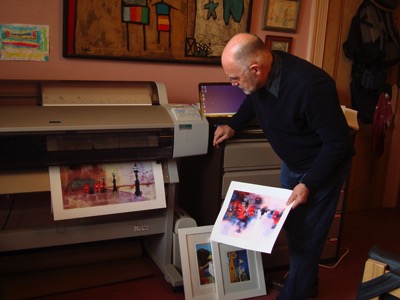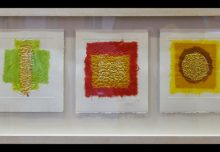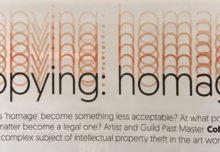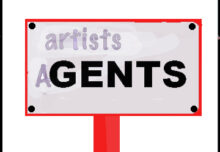Self publishing for artists…whatever next?
Self publishing has had the single biggest impact on many artists lives in the last few years. The end of control by the mighty publishing houses has enabled many more artists to publish much more art. This is good for artists, good for their art, and good for art lovers. Two things made it all happen.
One, the World Wide Web.
- The WWW bonanza has meant that anyone can communicate with billions of people at lightening speed. If they learn how.
- Over the last couple of decades the Internet has spawned thousands of virtual galleries.
- Art lovers and collectors have shown that they are willing to use these new market places.
- Savvy artists can create a website very easily to show and sell their work.
- Many other new businesses have emerged that provide online venues for all artists to use as market places.
Two, high quality inkjet printing.
- High quality inkjet printing has enabled Print-on-Demand which greatly cuts down the cost of publishing art editions.
- PoD eliminates over-production waste.
- The speed and affordability of PoD means that the artist gains control.
- The big publisher [door-keeper] no longer decides what is commercially viable and there is much more variety available.
- Giclee is supplying the long tail of the art print market with self-publishing and thus provides more opportunity for art lovers and artists.

CR printing on Epson
So where will it all end? Whatever next?
I predict that the self-publishing artist will take over a greatly expanded central ground in fine art publishing.
Two ends to the art print market place.
High quality, low quantity.
There has always been a small, dedicated market for low-number-run hand-made prints. The artist creates very short runs of etchings, engravings, serigraphs, and hand-made stone-based lithographs. These hand pulled prints use traditional print-making methods in a small studio. The editions are usually high in quality but low in quantity. It was, and still is, quite common to see editions of 10 to 25. The image size is usually small to medium. The whole edition is printed, signed, and numbered in one fell swoop.
The art collector is pleased to buy direct and pay well from the original print-making artist if they can make contact.
High quantity, low quality.
Previously the cost of printing larger images in quantity was available only to big publishing houses. They licensed or commissioned images from artists and printed using high-speed litho presses. Then they warehoused the prints and marketed their company portfolio to the public. It was not practical to expect artists to sign the thousands of printed images. Nether were the pictures numbered. The paper quality and lightfastness was often mediocre or poor. But that didn’t matter because the product was cheap. These ‘posters’ were not usually seen as a collectable investment potential. This end of the market still exists.
The central ground was small.
There were a few publishing businesses printing numbered editions in quantities and qualities that still made commercial sense. Editions were produced on better quality paper and included the artist’s signature.
The publisher usually marketed these prints as ‘Limited Editions’. The quantity would be predetermined. Up to 300 would usually be a commercially published screen print, while a typical lithography print run would be up to 1000 or even higher.
This market supplied collectors who wanted better quality than the poster publisher. The art lover paid higher prices and had a wider choice of larger work as well. But this central ground was controlled by the publishers and difficult for artists who had to have deep pockets or be invited to enter.
Then in the 90’s along came giclee. Drumroll and fanfare!
Initially the rotating drum machines only produced one-metre square paper prints. 25 years ago there was just one in Europe offering the service to artists, then later another in England. Eventually new wide-format inkjet print machines arrived in a variety of sizes enabling small size, medium size, and large size prints. More and more specialist printers set up workshops to print for artists using the new machines, until nowadays there are giclee printing services all over.
The machines use images from digital files. It is possible to print a single print, then stop. When a second, third, or more prints are required later they can also be printed using the same digital file, and will be just as good as the first print.
The term ‘Limited Edition’ becomes irrelevant as buyer demand influences production quantity.
Archival quality rolls of coated, paper and even canvas should be used. The price per print is high. Typically it also costs quite a lot to set up the digital files and test prints. The special paper is necessary and the pigmented inks are expensive. A simple A3 print can cost the artist over £75 each. Ouch!
Conclusion.
Any ambitious artist will just have to do their own marketing and selling direct to the collector. And they can by using the internet.
Nowadays the world wide web has meant that any artist can effectively communicate directly to their collectors and this will cut out the middle-men.
In fact the modern artist has to do this. Because….
There has been a dramatic drop in the number of bricks and mortar art galleries that will sell for artists.
The middle-men are vanishing as galleries decline.
So many more artists are finding it possible and necessary to set up self-publishing using their own printmaking machinery.
They are providing a range of fine art prints that can be marketed onto their own focused section of the market.
This change means that the etchers and engravers will also benefit as the direct central market grows.
The long tail will provide income for many more print-on-demand self-publishing artists, and the middle-men will get fewer and fewer.
Print on Demand process will affect the use of the marketing term ‘Limited Edition’ which will be replaced by “Signed and Numbered’ instead.
Artists will control and supply the growing center of the art publishing world.
Yee-ha!




